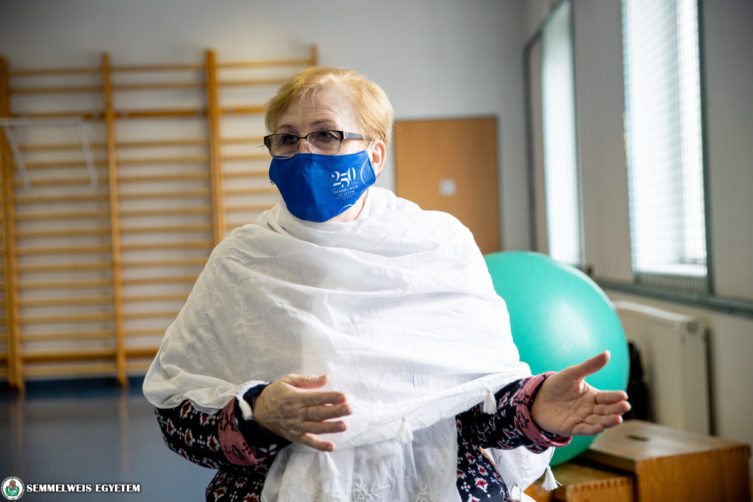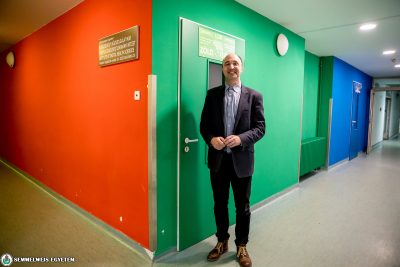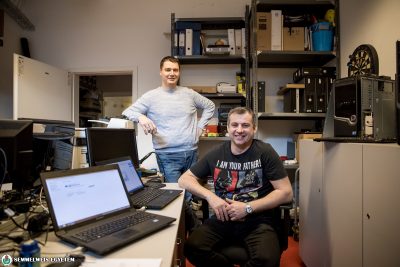 Upon hearing the word gymnasium most of us would think of the PE classes at school. However, dr. Irma Tim, master teacher at the Department of Physiotherapy of the Faculty of Health Sciences compares the room to a workshop where we can learn the art of kinesiology. She has been working here since 1989 as a full-time teacher. She was responsible for creating teaching materials and teaching many subjects to students of physiotheraphy. She is co-author of a two volume textbook summarizing her theoretical and practical knowledge.
Upon hearing the word gymnasium most of us would think of the PE classes at school. However, dr. Irma Tim, master teacher at the Department of Physiotherapy of the Faculty of Health Sciences compares the room to a workshop where we can learn the art of kinesiology. She has been working here since 1989 as a full-time teacher. She was responsible for creating teaching materials and teaching many subjects to students of physiotheraphy. She is co-author of a two volume textbook summarizing her theoretical and practical knowledge.
The campus at Vas Street holds many great memories for her. After classes she likes spending some time at the gymnasium on the fifth floor, as it offers a splendid view of the nearby Gellért Hill and Hungary’s Statue of Liberty. The room is equipped with many tools, such as physio balls of different sizes and materials. She says the medicine ball is ideal for patients who want to start doing sports again. Physiotherapists should pay attention to gradually putting stress on joints, as this is crucial in preventing injuries.
“If we choose the right size and sit with our legs positioned parallel, the thighs should be a bit shallowing downwards. This way the spine can rest in a neutral state. In Germany this practice is called ‘Hocker-Gymnastik’. Older people used to sit like this on kitchen stools- which puts less burden on the spine”, adds dr. Tim showing us the proper posture.
Dr. Irma Tim has a lot of memories of her students, who she spent a long time within the walls of the gymnasium. Teaching two of her students was a very special experience for her. They used to doze off while doing lying down exercises, because they occasionally performed at night as jazz musicians.
“But despite appearances, they actually paid attention and later became experts in the field”- says dr. Tim. They are both working in Hungary now, one of them is helping patients with injured spinal cords, and the other one is a lecturer teaching physiotherapy in English. The moral of the story is that we shouldn’t judge a book by its cover and we should always take a deeper look to see what’s beneath the surface.
According to her the greatest thing in physiotherapy is instant success, which is preceded by years and years of hard work. “As a physiotherapist, every moment holds the opportunity for success. A physiotherapist can help patients overcoming the difficulty of moving the fingers through regular practice, which enables the patient to use them as before. Or we can help patients with leg pain to walk without a limp, and help getting patients out of bed after a long time.”- says dr. Tim.
Dr. Irma Tim graduated in 1973 with a degree in Physiotherapy. In the next 16 years she had been working in patient care. She actively took part in the clinical training of physiotherapy students. During her 32 years as a lecturer of BSc and MSc courses in physiotherapy, she has shared her knowledge and practical experience to thousands of students. After 48 years of working she is looking to retire. To her fellow colleagues she advises to always be passionate about their profession. Sharing personal experiences can make students learn about the beauty of this profession.
Dóra Vas
Photo: Attila Kovács – Semmelweis University
Translation: Norbert Lukács
In our series entitled “My University”, Semmelweis university citizens show their favorite locations. The articles are a part of the Semmelweis University’s 250th anniversary series, which is available on the University’s anniversary website.


